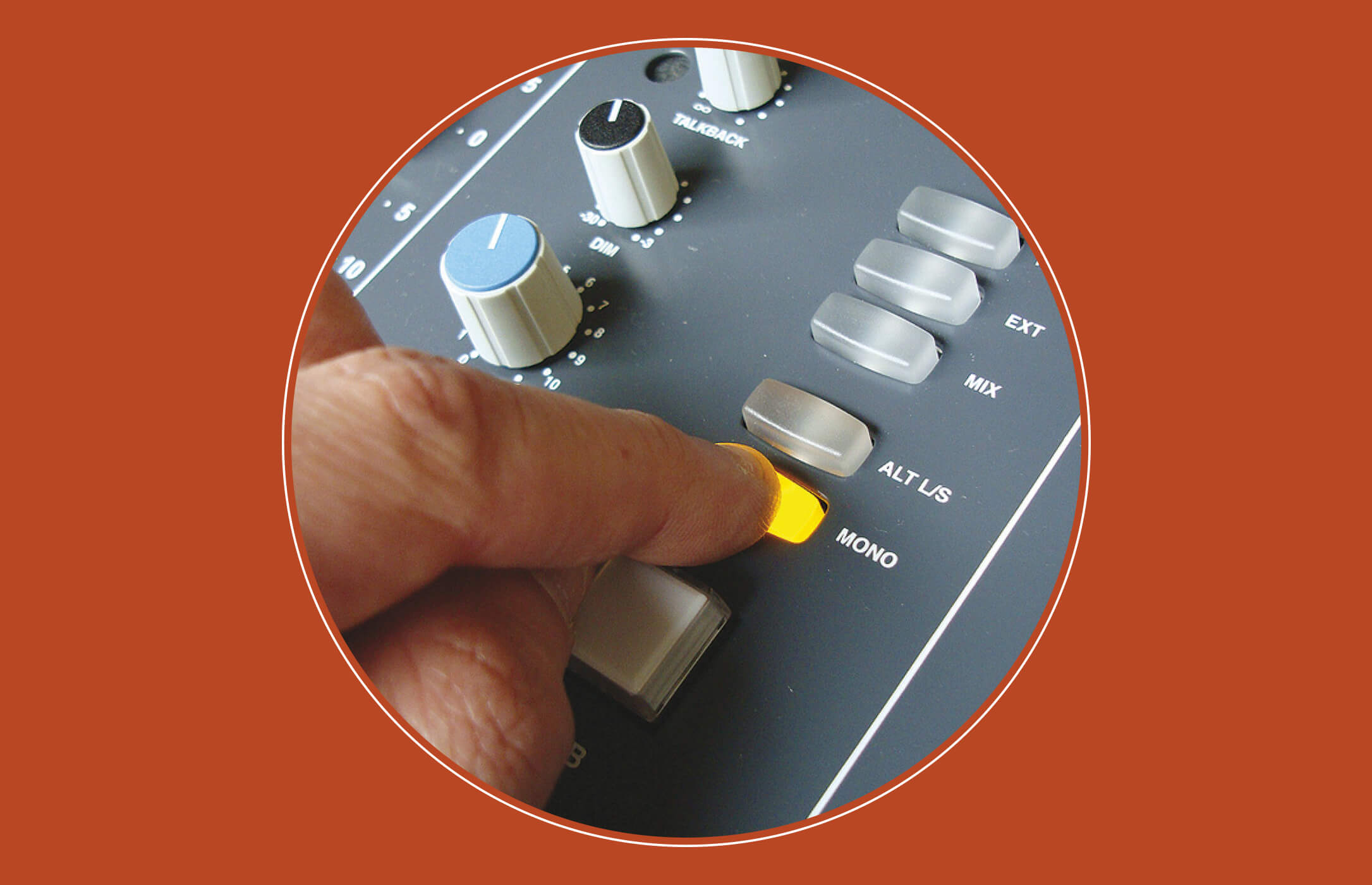Why Mono Mixing Is Better for Creating Clarity in Your Mix
Mono mixing is one of the most effective methods to create simple, well-defined blends. However, understanding what it entails can be difficult. As you’ll soon see, mixing in mono has a lot of benefits, but to pull it off, you’ll need to understand how it differs from stereo mixing. Let’s get started.
Stereo vs. Mono
Let’s begin with a definition of mono in music terms. Mono refers to discrete audio signals, such as a single microphone-recorded voice stream. You can also record in stereo, by using a second microphone on a single channel to record the same vocal. This is the easiest part to grasp, it only becomes more complex as we discuss mono vs. stereo mixing further.
When recording or importing mono signals into your DAW (digital audio workstation), the signal is normally divided 50/50 between the left and right speakers. When the left and right signals vary in some way, the track is said to be stereo.
What does it mean to mix in mono?
Mono mixing isn’t just about arranging layers of single audio tracks in your albums (though it can be if desired). Starting the mixing process by listening in mono is, without a doubt, the easiest way to go. This is still true even if the tracks are planned to be stereo.
Some engineers, in particular, mix levels in mono for the majority of the process. This is due to the fact that mono has not only clarification when listening, but also the ability to detect mix errors. Mixing in mono, for example, can aid in the detection of phasing problems between various waveforms.
For certain producers, mixing in mono from beginning to end might not be feasible. However, remaining in mono for a long enough period of time to provide a stable basis in your mix is a smart idea.
Why does mixing in mono make the process smoother?
Why use mono when you can make a track sound “wider” in stereo? Simply because bigger isn’t always better, especially in the world of music production. Surprisingly, widening the tracks in stereo can also make them sound too thin.
Mono mixing has a slew of other benefits in addition to adding clarity to the mix:
- Mono compatibility is ensured (many mono listening environments)
Let’s begin with one of the most compelling arguments for mixing in mono: not all audio formats are made equal, by mixing in stereo you are leaving out mono listeners.
This means that potentially crucial audio material could be omitted from what mono listeners hear. Some clubs and venues might also not have the required facilities to play stereo tracks.
- Allows you to concentrate on frequency scales without being distracted.
When it comes to EQing the songs, mixing in stereo creates a lot of distractions. It’s tempting to use stereo effects to expand and colour your mix, but shaping it in mono first is a far safer option. - Makes judging relative volume simpler.
If your blend has volume problems, your work as an engineer can be much more difficult than it needs to be. When important aspects of the mix are swallowed up by louder, less important ones, the whole song fails.
Adjusting volume settings is simple when mixing in mono. Consider it a blank canvas to begin on, rather than tinkering with something that has already taken form. If you start from scratch, you’ll end up doing less work in the long run.
- Addresses problems with masking
When sounds in your mix compete for room, the mono approach allows you to arrange them properly by changing frequencies.
Stereo mixing hides masking problems, but it can lead to muddier mixes in the end. This method necessitates a lot of effort, but it pays off.
Panning after mixing in mono
After mixing in mono, you’ll definitely notice that panning gives your mix a lot of depth and energy. This is due to the clarity you’ll get from mono mixing, which will provide you with a stable base to work with.
Like mixing in mono, LCR panning is an easy way to bring clarity and directness to your mix. However, just like mixing in mono, it’s not for everyone. If a solid mono mix reveals a track that isn’t rewarding to listen to, then no amount of production magic will be able to fix it. The quality of recordings and the musical ideas you work with are hugely important.
LCR panning, like mixing in mono, is a simple way to add consistency and directness to your blend. However, it is not for everyone, similarly to mixing in mono. If a good mono mix shows a track that isn’t enjoyable to listen to, no amount of production magic can help. The accuracy of your recordings and the musical ideas you use are crucial.
But if the material you’re working with is solid, a mono mixing approach can set you up for success.
Like mixing in mono, LCR panning is an easy way to bring clarity and directness to your mix. However, just like mixing in mono, it’s not for everyone.
If a solid mono mix reveals a track that isn’t rewarding to listen to, then no amount of production magic will be able to fix it. The quality of recordings and the musical ideas you work with are hugely important.
But if the material you’re working with is solid, a mono mixing approach can set you up for success.



